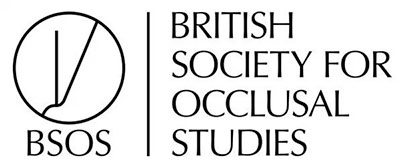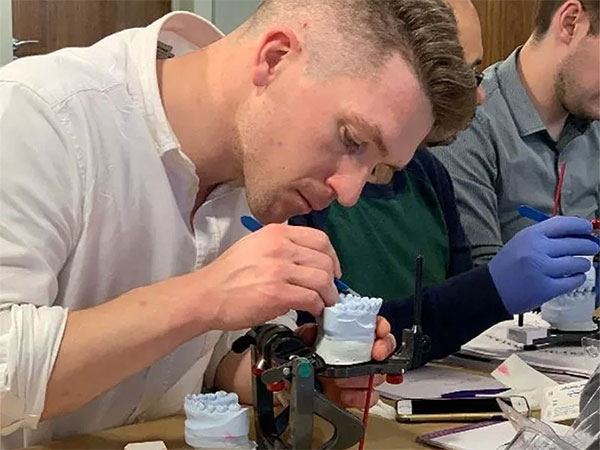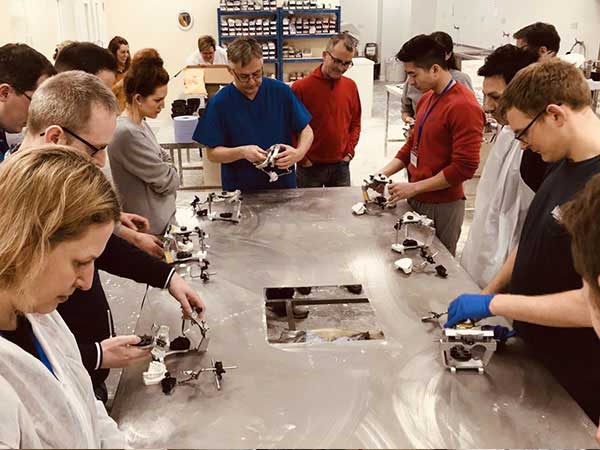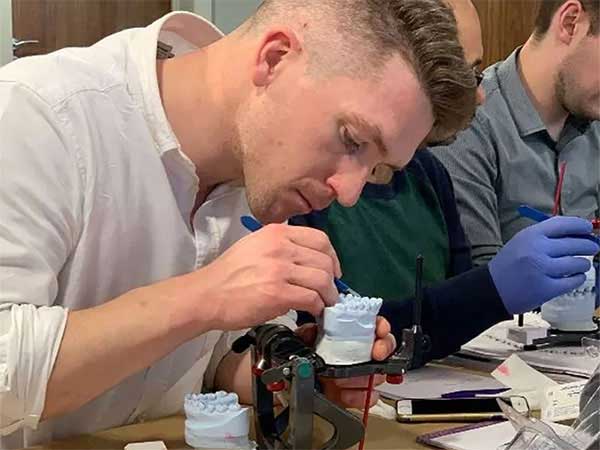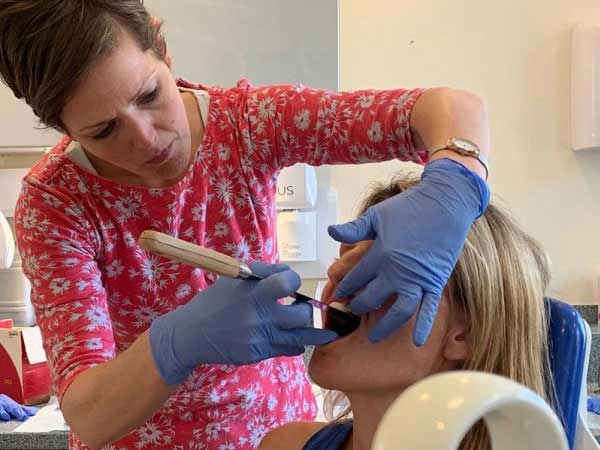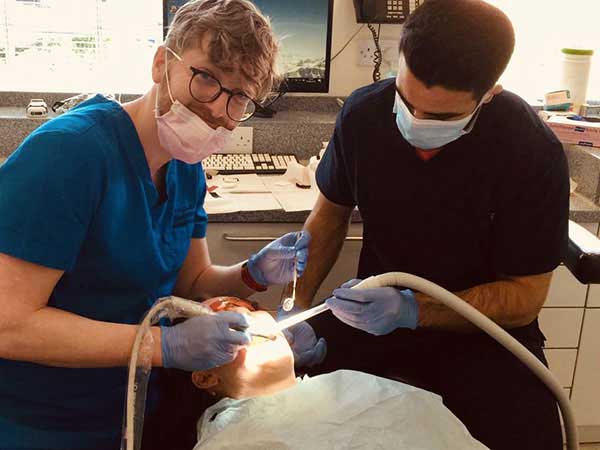Why Learn Occlusion?
Occlusion touches on every aspect of dentistry and it is one the most important factors in determining the longevity of our restorations. Sadly, the subject is often badly taught and many dentists have a confused understanding of Occlusion. Possibly, day-to-day they don’t even think about it.
We all know there is social pressure today for people to have perfect teeth. Patients come to us for solutions, be it crowns, veneers, composites or orthodontics. We need to get it right as litigation increases and it’s well documented that patients are less willing to accept problems from elective treatment than from treatment necessitated by pain.
Patients often arrive with worn or chipped teeth and many practitioners decide to restore lost tooth structure without understanding what caused the tooth loss in the first place. Remember that if patients can wear down enamel then they can easily wear down (or, more likely, fracture) our restorative materials.
Case Example
This 52 year old lady was referred to me by a local practitioner, she had been to see a “cosmetic dentist “but was unhappy with the treatment that was offered, she was also given no explanation as to how or why her tooth loss had occurred. She was advised that she needed full coverage metal ceramic crowns to provide the necessary strength to prevent the restorations fracturing.
A full history was taken and the patient stated that she was aware of grinding her teeth, had regular headaches and neckaches and had a disturbed sleep pattern. A full occlusal examination was taken, study casts mounted on a Denar Mark II Articulator using a Slidematic Facebow transfer and Centric Relation record. A large deflective contact was identified on a molar and there was a large Maximum InterCuspal Position (MICP)- Centric Relation (CR) discrepancy.

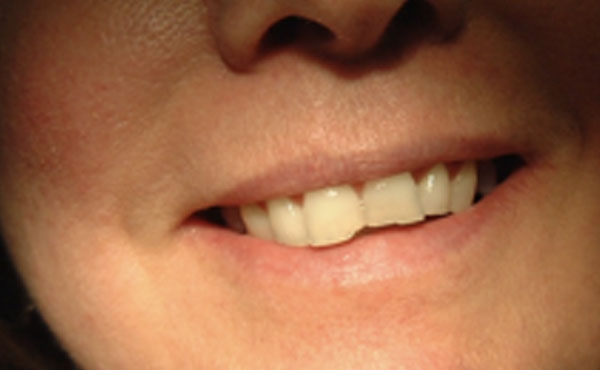
Level 2: theory +
A hard acrylic appliance was constructed and adjusted to give even simultaneous posterior contact and no anterior contact in CR, but with immediate anterior contact on excursive movement allowing posterior disclusion. This is called Mutually Protected Occlusion. After 2 weeks night- time wear she reported that she was free from headaches and neckaches for the first time in many years.
The appliance contacts need to be regularly checked and adjusted if needed. She wore the appliance for 3 months until there was no need for further adjustment as her joint position had stabilised. I then equilibrated her teeth to establish even posterior contacts and smooth anterior guidance. The canine cusp on the left side was built up with composite. A diagnostic wax up of the proposed new anterior occlusion was then copied and composite temporaries placed on the teeth.
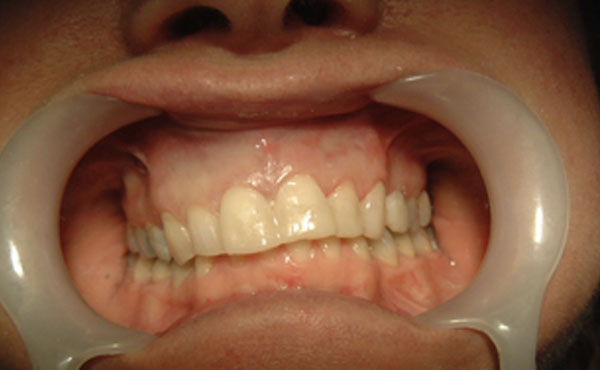
Treatment sequence for this case
- Mounted study models
- Cr/tanner /Michigan splint
- Cast equilibration
- Equilibration
- Preparation and temporaries
- Working impressions Facebow
- Fit veneers and new upper Michigan
These were placed to ascertain if the new occlusal pattern was acceptable to the patient and to tweak aesthetics. Temporary composite veneers are also useful to check the occlusal scheme. If they fracture or debond it indicates that some aspect of planned prescription is incorrect. They were adjusted on two occasions and were in place for 3 weeks.
Impressions were then taken and mounted in MICP, now coincident with CR. The lab made a custom incisal table for the articulator based on the guidance established in the mouth using the temporaries. In this way we can recreate the guidance in the final restorations. Five teeth (11, 21,22,23,24) were prepared for feldspathic veneers. We were careful to keep the preparations in enamel and we avoided treating the unaffected incisors as we felt we could achieve a good result with minimum tooth loss.
5 veneers were cemented using standard protocol and final excursive movements adjusted to ensure smooth and immediate anterior disclusion.
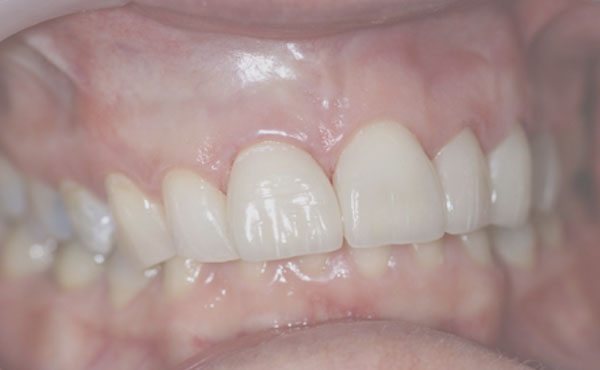
The patient was delighted with result both aesthetically and that she had lost her headaches, neckaches and had an uninterrupted sleep pattern.
I would like to thank Naomi Greaves for the beautiful porcelain work.
These days there are many courses that teach the preparation and cementation of veneers, some will pay lip service to occlusion but few that cover Occlusion in depth. We feel it is far to big a subject to learn all at once, it just becomes confusing.
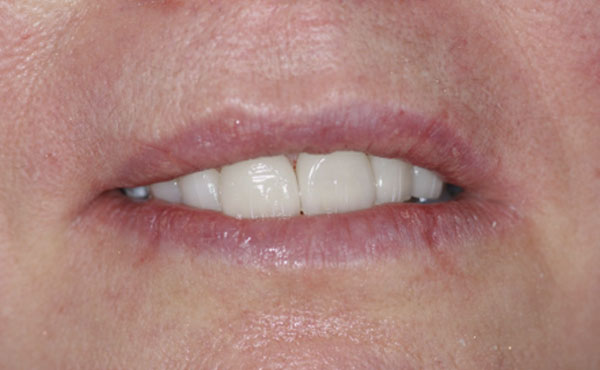
BSOS run introductory one-day theory courses with the option of a follow-up practical day, and in conjunction with IPSO (The International Partnership for the Study of Occlusion) we offer a much more in depth 3 day Theory Plus Course. We also have a follow-on Practical weekend, all about Appliances, which teaches the manual skills needed to fabricate and adjust appliances.
If you want to take your studies further still and really add to your skill set, we also offer Applied Occlusal Principles which, over several months including 3 practical weekends in a multi-surgery practice, teaches you the skills you need to manage your patients occlusal needs, culminating in you equilibrating one or two of your own patients, (very different to equilibrating models)!
Join today!
Join today and become part of the BSOS family:
- A friendly approachable group
- Support and camaraderie with our members
- Member rates for BSOS courses
- Advice on treatment and care for patients
- Access to a huge library of resources
Join us...become a thinking dentist!
